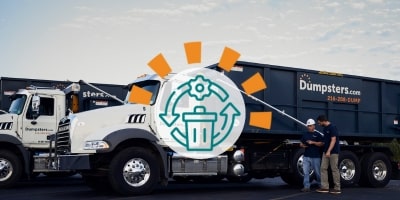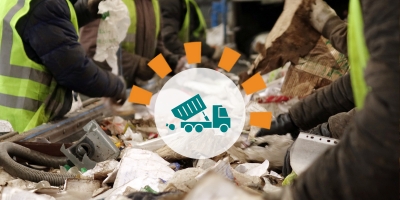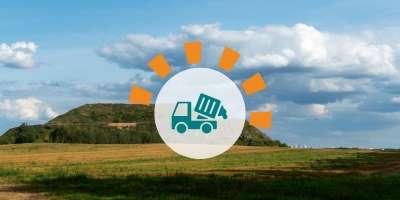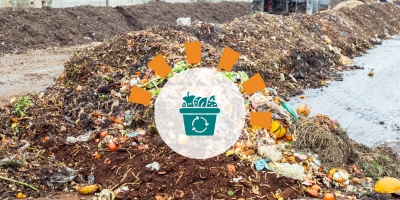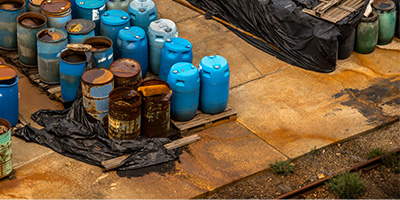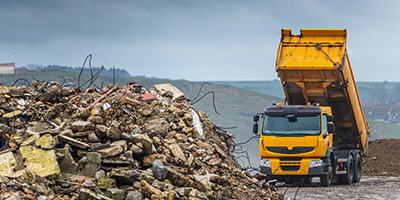How Modern Landfills Protect the Environment
Find out what happens behind-the-scenes at your local landfill.
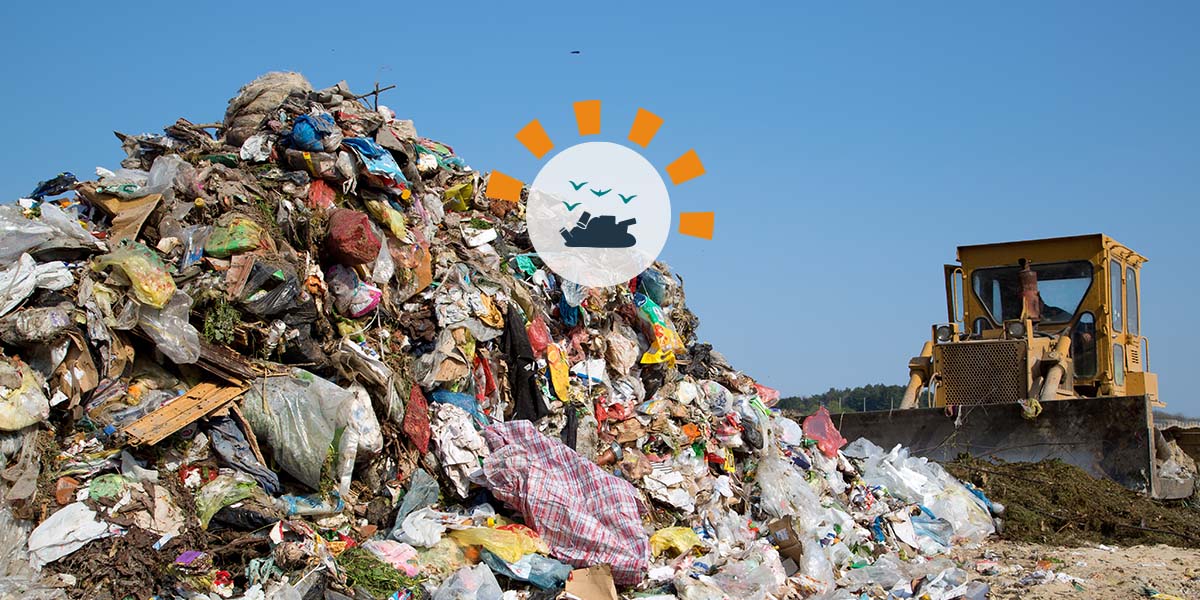
Your Local Landfill Is a Better Neighbor Than You Might Expect
It’s the eve of garbage day. Maybe you feel a bit guilty as you roll your can to the curb. After all, despite any recycling or composting you might do, some items still must go to the landfill. In fact, the average person produces 4.5 pounds of trash per day. Unfortunately, landfills have a reputation for harming the environment. But it turns out, that image doesn’t always match up with the way modern landfills work.
From managing gas emissions to monitoring groundwater, modern landfill science allows today’s waste collection facilities to minimize their ecological impact as much as possible. Learn more about the science behind landfill management from the experts at Tetra Tech and Elizabeth Ward, a former chemical engineer for the U.S. EPA.
How Today’s Sanitary Landfills Work
What Is a Sanitary Landfill?
In the past, we tossed our waste into open dumps. These sites were not monitored and few steps were taken to separate waste from the surrounding environment. This meant it was easy for toxic chemicals and gases to contaminate the nearby air, soil and groundwater. These areas also acted as breeding grounds for mosquitoes and other disease-carrying pests. Many people still associate that dirty image with landfills. But today, nearly all landfills are sanitary landfills. The open dumps of the past are rare, except in cases of illegal dumping.
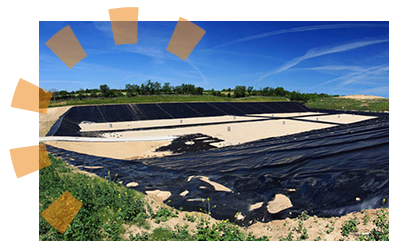
In a sanitary landfill, waste is separated from the surrounding environment using a system of layers designed to allow waste to decompose safely. While decomposition can produce methane—a major contributor to climate change—most sanitary landfills collect this gas and use it to generate electricity, which keeps it out of the atmosphere.
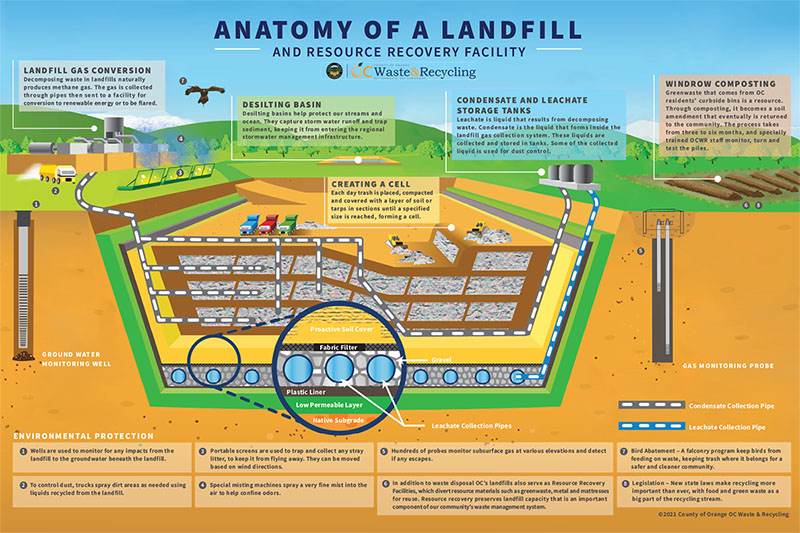
Image Courtesy of OC Waste & Recycling
4 Layers: How Sanitary Landfills Work
To put it simply, sanitary landfills operate by layering waste in a large hole. The deepest spots can be up to 500 feet into the ground, like Puente Hills, where a third of Los Angeles County’s garbage is sent. As materials decompose, landfill gas experts continuously monitor groundwater to detect any leakage.

“Conducting regular groundwater monitoring is required by federal and state regulations to detect if landfill operations are causing a negative impact on groundwater underneath the site, and to allow for corrective action to occur as soon as possible after an impact is detected.”
Let’s dig into how each layer works to keep waste from affecting the environment as it safely decomposes:
Layer 1: The Liner System
The bottom of a modern landfill is typically lined with compacted clay dense enough to prevent liquids from penetrating it. On top of the clay, landfill engineers install a liner made of high-density plastic for added protection.
Layer 2: The Drainage System
Some waste produces liquid as it decomposes. And as rain and snow filter through a landfill, it can carry other contaminants to the bottom. Perforated pipes are installed on top of the liner to collect these liquids—known as leachate—and funnel them to treatment facilities, either onsite or at wastewater treatment plants.
Layer 3: The Gas Collection System
Waste naturally produces methane as it decomposes and when methane is released into the atmosphere, it contributes to global warming. But methane is also the main component of natural gas. Modern landfills work to turn methane into power using gas extraction wells that pipe it to treatment areas and then to plants that will turn it into electricity or other forms of energy.
Layer 4: The Trash Itself
In the main area of the landfill, trash is delivered and then compacted to take up less room. Every day, the new trash is covered with a layer of dirt which helps contain odors and deter pests.
What Is Landfill Capping?
Once a landfill is full, it is capped with another liner made of synthetic plastic. That liner is covered with at least two feet of soil, then vegetation is planted. The site continues to be monitored for at least 30 years to ensure the surrounding environment is safe from contamination.
Landfill capping helps to buffer humans and the environment from a landfill’s contaminants, limits migration of debris and creates an opportunity for the area to be transformed into parks and open spaces.
Landfill Alternatives: How Drop-Off Sites Reduce Landfill Gas
Perhaps the biggest stride modern landfills have made toward environmental responsibility is recognizing that not all waste belongs in a landfill. Separate drop off locations for organic waste and hazardous materials provide a more eco-friendly alternative for disposal.
According to Bryan Stirrat, a landfill gas expert for Tetra Tech, “There is currently considerable emphasis being placed on reducing the volume of organic waste (green and food) being disposed of in landfills.” As organic waste degrades in the landfill, it releases potent gases and odors.

“A green waste drop-off area at a landfill helps reduce organic waste disposal in the landfill. It also enables the site to either compost or digest this waste to produce more sustainable by-products, such as a soil amendment or vehicle fuel for trucks.”
On top of that, hazardous waste drop-off centers provide a safe place for the disposal of used motor oil, pesticides, paints and other hazardous household waste. Instead of pouring chemicals down drain pipes or into the trash can to contaminate our environment, modern landfills ensure safe disposal.
These technological and ecological advancements help to maintain a safer, more environmentally friendly waste system.
So, Where Did Trash Go Before the Modern Landfill?
Well, it wasn’t pretty. In the days before today’s landfills, trash and human waste were tossed out the window to decompose in the street. It was not until the turn of the 20th century, when urban areas began to fill up with more people (and trash), that cities started doing something about their garbage.
The Evolution of the Landfill
Year | Event | ||
|---|---|---|---|
1935 | California introduced the first semblance of a modern landfill – a giant hole in the ground where trash was sporadically covered with dirt. | ||
1959 | The first guidelines for a “sanitary landfill” were introduced, advocating for trash to be compacted and covered with a layer of soil daily. | ||
1965 | The Solid Waste Disposal Act (SWDA) became the first federal legislation addressing trash and solid waste management. | ||
1976 | The Resource Conservation and Recovery Act (RCRA) began to enact standards for sanitary landfills by dividing waste into two categories: hazardous and solid waste. | ||
1979 | The first set of standards for sanitary landfills was developed by the EPA, including criteria for new landfills and reducing disease and groundwater contamination in existing landfills. | ||
1991 | Federal criteria for municipal solid waste was established by the EPA including groundwater monitoring requirements, closure and post-closure care requirements, additional design standards and corrective action for known environmental detriments. |

“Many apartment buildings were constructed with garbage incinerators in the basements and trash chute systems. In the 1920s, it was common for garbage, incinerator ash and dirt to be used to fill in swamps near cities which allowed the contamination of groundwater.”
More Than a Giant Hole in the Ground
Today’s landfills have progressed from a simple hole in the ground to meticulously engineered systems intended to protect human health, control groundwater contamination and reduce air emissions. While we can never eliminate all contamination risks, modern landfills work to keep our cities clean and healthy as we continue researching new ways to deal with waste.
Take a look at the Sustainability section of our blog to learn how you can reduce the amount of waste you send to the landfill.
Expert Contributors
Tetra Tech
Tetra Tech is a leading global provider of consulting working to provide technical solutions for various industries. Located in California, the company supports commercial and governmental clients and have 21,000 associates worldwide focused on water, environment, sustainable infrastructure, renewable energy and international development.
What Do You Think?
Want to learn more about landfills? We're listening. Head over to Twitter or Facebook,
and use #dumpstersblog to join the conversation.

